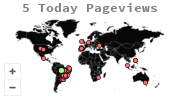Predict the Creativity of the Engineers of Kermanshah Engineering Organization Based on Their Personality Five Factors and Mental Health
DOI:
https://doi.org/10.20946/rad.v19i2.33173Palavras-chave:
Creativity, Personality Five Factors, Mental Health, Engineers.Resumo
Aim: The aim of this study was to predict the creativity of the engineers of Kermanshah Engineering Organization based on their personality and mental health factors. Method: This study was performed with Pearson correlation and multiple regressions, Cranach's Alpha coefficient, SPSS software version 20. A total of 375 engineers were selected based on Morgan table that completed 3 types of questionnaires: Torrance questionnaire (verbal section), (NEO-FFI) questionnaire and GHQ-28 questionnaire. The significant level in this study was considered as 0.05. This study was descriptive and correlation based. The sampling method was random. The study was a descriptive – correlative. Result: Correlation and regression analysis showed that there was a significant relationship between creativity (fluidity, flexibility, innovation, expansion) with five factors of personality (Neuroticism, Extraversion, Conscientiousness, Openness, Agreeableness) and mental health (physical symptoms, anxiety and insomnia, depression, social function). So regression analysis showed that personality factors (neuroticism, extraversion, flexibility) are better models to predict creativity.
Downloads
Publicado
Como Citar
Edição
Seção
Licença

Este obra está licenciado com uma Licença Creative Commons Atribuição 4.0 Internacional.








